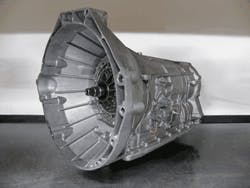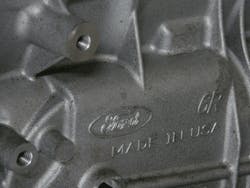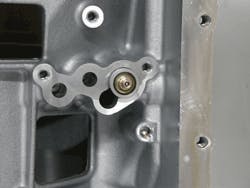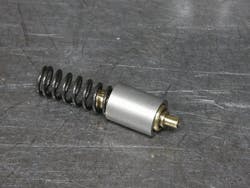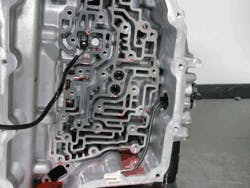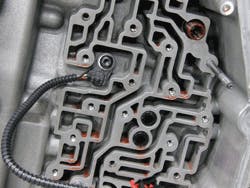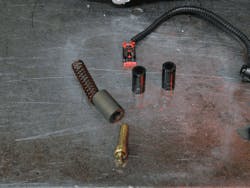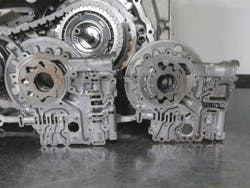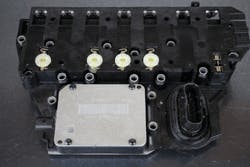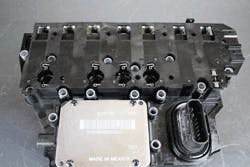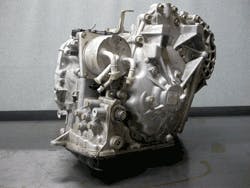From time to time, we hear about how people can be resistant to change and understandably so in many cases. I was very disappointed to hear that GM had to close its Willow Run transmission plant as part of its bankruptcy proceedings. As 2010 came to a close, its 50 plus years of transmission production in that facility also came to a close.
General Motors for years has been a multinational corporation being involved with a large variety of other automakers and subsidiaries. One would not be quick to think that a SAAB vehicle could have a 6T40 or a 6T70 FWD transmission in it or better yet a 4L60-E. Honda and Acura used GM’s 4L30-E transmission as well as Isuzu and BMW.
When automakers decide to buy a transmission from an engineering company, this too places a similar transmission is a wide variety of vehicles.The most common ZF transmission in the shops today here in North America is the 5 and 6HP series transmission. The 6HP is predominantly found in Audi, BMW, Jaguar and Land Rover vehicles. You will also find it in Bentley, Hyundai, Maserati, Rolls Royce and even Ford and Mazda. Ford and Mazda refer to this 6HP transmission as their 6R60/6R75/6R80 transmission (Figures 1 and 2).
The 6HP, for example, has been in existence since 2002. In 2006, some very significant changes took place that greatly affects a technician’s diagnostic approach. The first generation of transmissions is called the ZF6HP19, 26 and 32 while the second generation is called the ZF6HP21, 28 and 34. A newsletter sent out in September called “ZF Generation 1 and 2” covered this change. It covered the significant differences with the solenoids used, their identification, location and operation. Not knowing these differences can be very challenging from a diagnostic standpoint.
Another interesting aspect that can be observed when an Automaker buys from an engineering company like ZF is that they can implement their own methods of doing things. Case in point, Ford likes using thermal bypass valves in their cooling system. From all the variations of ZF transmissions I have seen here in the U.S., I never have seen one with a thermal bypass valve. But with Ford’s 6R60 there is one, as seen in Figures 3 and 4.
This same scenario comes up with GM and Ford working together with theirBeing inquisitive, I spoke with an engineer about pump differences and why Ford would chose a gerotor pump and GM a crescent style pump. His answer was that it basically comes down to a combination of what the company has experience with and what they have in regards to proprietary intellectual property.
With having improvements over valve body leakages, manufacturers are getting away with smaller pumps at idle, hence vane pumps are coming back as are gerotors. These days gerotor pumps have come a long way and are becoming the pump of choice of many manufacturers, especially where the pump is electrically driven or are offset (i.e. chain drive) away from the Torque Converter. Gerotors can package nicely in a small diameter space, as can vane pumps.
This article only scratched the surface of all the variations, differences, changes and similarities that occur in the transmission industry. Getting into the transmission used between Mitsubishi, Hyundai and Kia vehicles along with the changes and variations that go with it is quite formidable.
Or mentioning the Japanese Automatic Transmission Company (Jatco); aHonda, who for the most part manufacturers their own transmissions, is in a league of their own. The variations of transmissions they produce seem never ending. You would think the cost involved in development and tooling would be a deterrent yet it is not.
Toyota uses transmissions from Aisin, its subsidiary producing quite an array of transmissions along with changes as well.
The twists and turns in keeping up with all the changes in the transmission industry are no doubt challenging. It is a maze and can be very difficult to keep up with it all.
Companies like ATSG and ATRA work hard at trying to get this information out to the aftermarket along with problems and fixes. It is challenging work as most manufacturers withhold this type of information.
When it comes to identifying the type of transmission being used in a car or truck, one source that has been very helpful is the original guide to Automatic Transmissions by vehicle by Transtec. This is available for free in hard copy, or as an app or on its website (www.transtec.com). The names given to these transmissions are yet another dimension adding to the calamity in keeping up with the changes. We have techs calling in on ATSG’s technical helpline saying, I’m not sure of the name of the transmission I am working on but I need your help. It sounds odd but I totally understand the dilemma. Just flip through this guide and you can see how helpful it will be.
Looking forward, the task of keeping up with all these changes will still have its twists and turns. Subaru will continue with Jatco design CVT’s as their only type of transmission. Word has it that Honda will be doing the same with their own design. Dodge seems to be leaning towards using the Getrag Dual Clutch Transmissions. ZF8 and 9 speeds have already taken a nice size bite in the auto industry with 10 speeds from GM and Ford on their way.
With the way automakers and engineering companies’ design and change automatic transmissions so frequently, keeping up with the changes seems more like keeping up with the Joneses.
